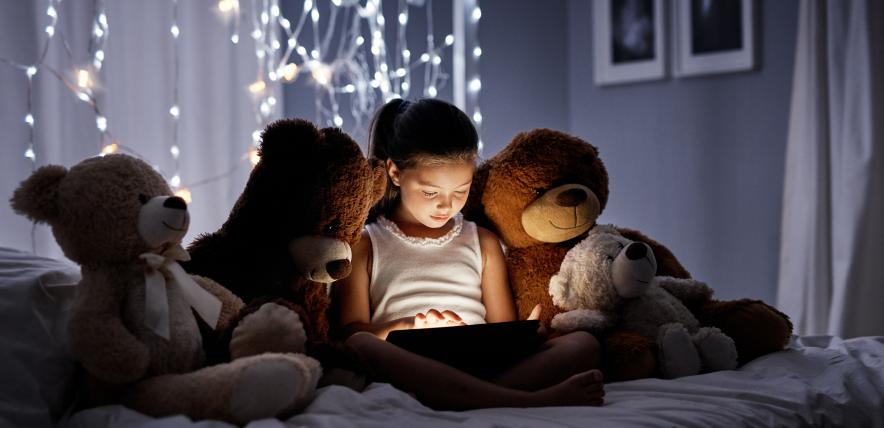By Dr Gemma Goldenberg, psychologist at ISEY (Institute for the Science of Early Years and Youth)
We’re raising children in an age of smartphones, tablets, and digital media—and with that comes a wave of concern, guilt, and conflicting advice about screen time. Media headlines often oversimplify research findings and report alarming statistics, leaving many parents feeling anxious about even allowing small amounts of screen use. But what does neuroscience and research evidence actually say about screen time?
Technology as the ‘latest enemy’
Fear of new technologies isn’t new. When radio emerged, people worried it would disrupt family life. Socrates even worried that writing would weaken memory. Today, screens are often blamed for everything from anxiety and attention problems to behavioural difficulties. But are these fears backed by science?
It’s true that today we live in a faster-paced, more connected world where we process larger volumes of information than ever before. This impacts how our brains develop and function. Children today may show gains in certain cognitive skills—but also higher levels of stress and anxiety. Yet screen time is unlikely to be the only cause. Children now also spend less time outdoors, eat more processed food, and live in more urbanised environments. Parenting styles have changed, and awareness of neurodiversity has grown. Untangling the specific effects of screen time from these overlapping factors is incredibly complex.
What the research actually shows
To isolate the specific effect of screen time on children, researchers would need to compare children who are alike in every other way except for their screen use—these children would need to have the same socioeconomic background, parenting, sleep, nutrition, and so on. As this isn’t possible, most studies can only show correlations—not cause and effect. For example, studies might find that children who use screens more are also more anxious. But is screen time causing anxiety, or are anxious children more drawn to screens for comfort?
One recent review of 25 studies on mobile device use concluded that the impact of screen time depends heavily on the type and context of usage. It also stressed the need for higher-quality, longer-term research before drawing firm conclusions.
Not all screen time is equal
Young children often enjoy watching the same television episode repeatedly. This isn’t just a quirk—it reflects how children learn. Predicting what comes next and testing those predictions is a fundamental learning mechanism. Repetition allows children to gradually process complex visual and narrative information at their own pace.
This is particularly important because young brains process visual input more slowly than adults. A 15-month-old can process just one frame per second, compared to ten frames per second for adults. Watching the same content repeatedly helps them better understand what they’re seeing.
But what they’re watching matters. A thoughtfully written show like Bluey can expose children to narrative structure, social situations, and new vocabulary. In contrast, passive content like “unboxing” videos on Youtube, which are designed purely to attract clicks, offer little developmental value.
Screen time that encourages creativity, interaction, or problem solving—like certain educational games or video calls with relatives—can offer more benefits than passive watching.
What is being displaced?
Much of the concern around screen time comes down to what it replaces. If screen use prevents opportunities for physical play, face-to-face interaction, or time outdoors in nature, it’s more likely to negatively affect children’s development.
In fact, research shows that “green time”—being outdoors in natural environments—can protect children from some of the negative effects of screens. So rather than needing to eliminate screens entirely, the goal should be a ‘balanced diet’ of activities, rest and play.
Tips for healthier screen use
-
Check for comprehension
Is your child following the story? Ask them what’s happening or what a character just said to gauge their understanding. Be mindful that some programmes are too fast paced for young children to process. -
Look for signs of stress
Are they shouting, gasping, or transfixed while using a screen? Do they seem sweaty or dysregulated afterwards? When watching characters in danger on screen, or experiencing danger in a video game, this is often processed by the child’s brain and body as if it is really happening to them. -
Assess the quality
Is the screen time relaxing, educational, or social? Does it help them explore, solve problems, or engage in imaginative play? -
Watch out for what’s being replaced
Does your child still play with toys and enjoy creative activities? Do they go outside and have opportunities to interact with others? Or is screen time dominating their day and leading to a lack of interest in other things? -
Avoid screen time in the bedroom
Screen time is often most harmful when it disrupts sleep, as a lack of sleep is linked to issues with behaviour, attention and emotions. Keeping screen time in communal areas of the home also allows you to more closely monitor and supervise what your child is accessing.
Conclusion: a balanced brain diet
From a neuroscience perspective, the developing brain thrives on varied, interactive, and enriching experiences. Screen time is not inherently harmful—but its impact depends on how it’s used, what it replaces, and whether it supports or disrupts a balanced routine.
Rather than eliminating screens or feeling guilty for using them, focus on guiding your child toward high-quality content and ensuring they have time for active, social, and outdoor play as well. Sometimes screen time gives parents a vital break—and that matters too.
Showing an interest in what your child enjoys on screen can turn screen time into an opportunity for connection, not conflict. When you engage in conversations about what they’re watching or playing, you help them reflect on what they’re gaining from it—and you position yourself as a guide, rather than a gatekeeper. This reduces the chances of screen use becoming a battle ground, or being seen as something secretive or associated with guilt. The goal doesn’t need to be zero screen time, but rather mindful, balanced use. When used intentionally and alongside other enriching activities, digital media can be part of a healthy, modern childhood.
Further information







